I am a picky eater. I always have been. My go-to dish is chicken strips and french fries. When in doubt, order that. So when I visited South Korea to see my husband who’s living there, I was very nervous about the food! In fact, our first time going to a Korean restaurant made me break out in a sweat. I was so nervous that I wouldn’t like anything! And not knowing what you’re ordering or even eating once it arrives didn’t help matters.
For those of you who may be feeling panicked at the thought of trying these new foods, I’ve created this guide to Korean food to help you stay calm in the midst of ordering.
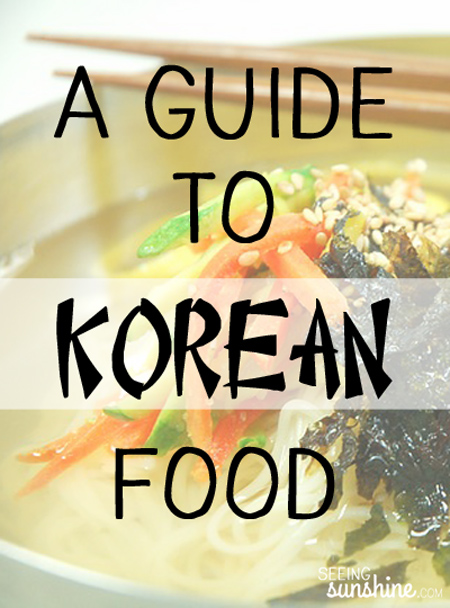
Here are the top six most common dishes you’ll find in Korea.
Bibimbap
The word literally means “mixed rice.” Bibimbap is served as a bowl of warm white rice topped with sauteed vegetables and chili pepper paste, soy sauce, or doenjang, a salty soybean paste. Beef or another type of meat is usually included. A raw or fried egg is added to the top of the bowl. It will be served with everything separately in the bowl, but it is eaten once you mix it all together.
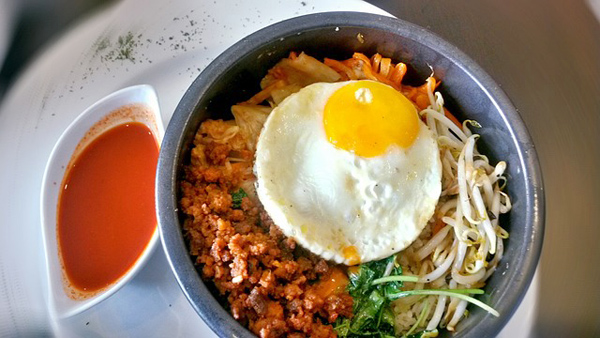
Kimchi
This is a fermented side dish made of vegetables with a variety of seasonings. Many describe it has spicy and sour. Koreans will ferment this dish inside jars that are buried underground for months at a time. There are tons of varieties of kimchi, but most are made with cabbage, radish, or cucumbers as the main ingredient. The most common seasonings used include brine, scallions, ginger, garlic, shrimp sauce or fish sauce.
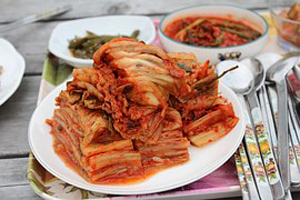
Yaki Mandu
Mandu means “dumpling,” and yaki refers to the way this dish is cooked. Dumplings are usually eaten on their own or in a soup. Yaki mandu are stuffed with meat (usually beef or pork), tofu, onions, mushrooms, and seasonings. They are fried to a golden brown and served with a dipping sauce made from soy sauce and vinegar.
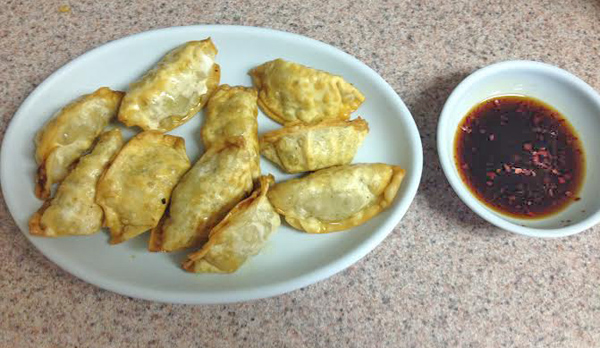
Bulgogi
The word literally means “fire meat” and is basically marinated beef that has been grilled. It is made of thin slices of beef, usually sirloin, that has been marinated in a mixture of soy sauce, sugar, sesame oil, garlic, pepper, scallions, ginger, onions and mushrooms. The meat is traditionally grilled, usually with garlic, onions and green peppers. This dish is sometimes served with cellophane noodles. Sometimes it is also served with lettuce, which is used to wrap the meat.
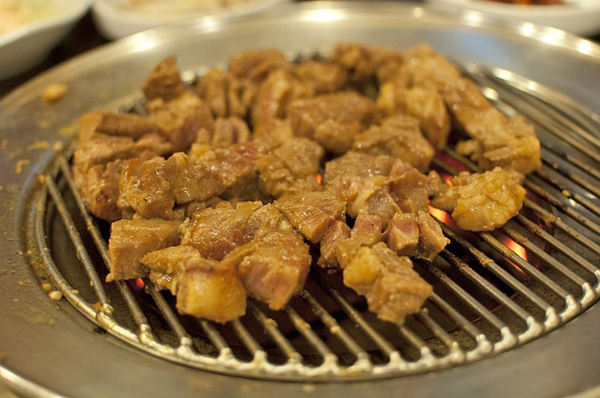
Galbijjim
This dish has several names, and don’t ask me how you pronounce it! But basically, this is a steamed dish made with beef or pork short ribs. Soy sauce, sesame oil, scallions, minced garlic, ginger juice, and other seasonings are mixed together with the ribs and are simmered in a large pot very slowly. When the meat is almost cooked, things like carrots and pine nuts are added. The dish is boiled, and mushrooms and chestnuts are added at the end.
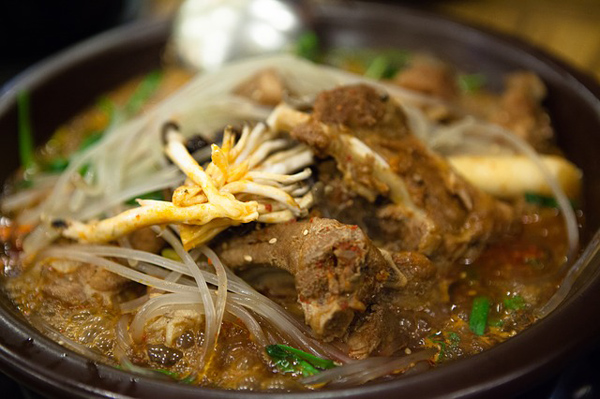
Gimbap
This literally translates to “seaweed rice.” This dish, also known as Kimbap, is made from steamed white rice (bap) and various other ingredients rolled into sheets of dry seaweed (gim). This dish is served in bite-size slices. The other ingredients can range from fish, eggs, meat, and vegetables that are either fresh, roasted, or pickled. This dish is often served with sweet radish pickle slices.
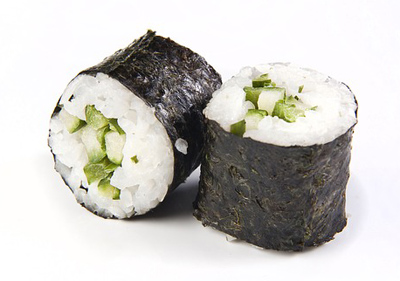
Other things to know about eating in Korea:
- They use very small drinking glasses in Korea. Seriously, these would be considered shots in America. But they usually set a pitcher of water on your table so you can refill your glass.
- They use chopsticks and many times they are already at your table either in a basket or a drawer.
- Koreans do not tip at restaurants.
- In restaurants in Korea, most tables have a button you push to call your waiter to your table.
- Prices will be in won. If a dish is 8,000 won, it is around $8 in US currency.
- There are many coffee shops and pastry stores in Korea.
- Most dishes come with a side of pickles or some type of pickled vegetable such as radishes.
Check out more of my Travel posts and be sure to follow my Pinterest board South Korea Tour for all kinds of information on Korea.
You might also like:



interesting about your posting kk I’m a Korean but I just want to point out to Yaki Mandu that is not Korean . The word Yaki comes from Japanese and we call usually it Koon Mandu in Korea. Anyway thank you for your posting about Korean food. I really want you to see others. such as 닭볶음탕 which is made of chicken. You should really have a chance to take a taste of it : )
Thanks for letting me know!